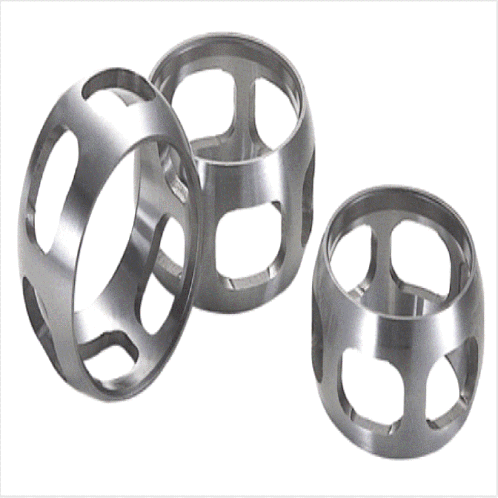seamless steeltube for automobile constant-velocity joint cage
-
Payment
T/T
-
MOQ
10,000 Kilogram (kg)
-
Supply Ability
10,000 Kilogram (kg) per Month
-
Supply Details
Customization
TBD(소재 발주시 월 10톤 최소구매), 제품 구매시 최소량 협의 필요
-
Country of sale
World Wide, Asia, Americas, Europe
-
PRICE
-
FOB
Depend on quantity
-
ITEM SPECIFICS
-
Brand
CV Joint Cage
-
origin
Republic of Korea
-
Size(Capacity)
Depends on the body
-
Package Includes
constant-velocity joint
-
Function
Parts that convert power and transmit it to the wheels through the drive shaft
-
Material
8617H
-
Features
Excellent wear resistance and durability
PRODUCT DESCRIPTION
Constant-Velocity Joint (CVJoint)
On front-wheel drive and all wheel drive vehicles, a coupling that allows the front axle to turn at a constant speet at various angles when the vehicle turns. The CV Joint is a shaft that tranmits engine power the transmission to wheel.
CV Joint cage is a key components of CV Joint, as it is easily breakable. CV joint cage is usually made of alloys with high intensity and carburized heat treated to enhance the durability.
Unlike ERW Steel Tubes, seamless steel tubes do not have bead, and they are used for special piping, such as for high pressure, high temperature, low temperature, anti-corrosion pipes, for machine structural use, and for heat exchangers, for which welded pipes are not available to use. Recently, the seamless Steel Tubes with great anti-corrosion and wear resistance are popular across the world to keep up with the trend of reducing weight of automobile part materials to increase fuel efficiency of automobiles. The company is supplying part materials such as drive shafts, propeller shafts, constant velocity joint cages for automobiles, etc. to domestic and overseas famous automobile parts companies, based on exclusive production methods and extraordinary technologies.
It consists of two identical ball yokes which are positively located (usually) by four balls. The two joints are centered by means of a ball with a hole in the middle. Two balls in circular tracks transmit the torque while the other two preload the joint and ensure there is no backlash when the direction of loading changes.
Its construction differs from that of the Rzeppa in that the balls are a tight fit between two halves of the coupling and that no cage is used. The center ball rotates on a pin inserted in the outer race and serves as a locking medium for the four other balls. When both shafts are in line, that is, at an angle of 180 degrees, the balls lie in a plane that is 90 degrees to the shafts. If the driving shaft remains in the original position, any movement of the driven shaft will cause the balls to move one half of the angular distance. For example, when the driven shaft moves through an angle of 20 degrees, the angle between the two shafts is reduced to 160 degrees. The balls will move 10 degrees in the same direction, and the angle between the driving shaft and the plane in which the balls lie will be reduced to 80 degrees. This action fulfills the requirement that the balls lie in the plane that bisects the angle of drive. This type of Weiss joint is known as the Bendix-Weiss joint.
The most advanced plunging joint which works on the Weiss principle is the six-ball star joint of Kurt Enke. This type uses only three balls to transmit the torque, while the remaining three center and hold it together. The balls are preloaded and the joint is completely encapsulated
R&D CERTIFICATE
-
- certificate of World-class Product of Korea
- Minister of Trade, Industry & Energy
- 2017.11.23
- 인증서보기
PAYMENTS DETAILS
- Telegraphic Transfer : T/T
- Name : Jae-Seon, Lee
SHIPPING
- 32 Jeongsin-ro, Jeongeup-si, Jeollabuk-do (56168)
The person in charge
Lee Jae seonAddress
32 Jeongsin-ro, Jeongeup-si, Jeollabuk-do (56168)
-
- Business Type :
- Manufacturer
-
- Main Product :
- seamless steel tube,
-
- Established :
- 2001-01-01
-
- Total Annual Revenue :
- More than 10 billion (KRW)
-
- Total Employees :
- 101~500 people
R&D CERTIFICATE
-
- certificate of World-class Product of Korea
- Minister of Trade, Industry & Energy
- 2017.11.23
- 인증서보기
Please suggest a variety of your ideas such as design, impact, enhancements, etc
Please enter the text on the left image to prevent automatic input.
0 / 4000
CUSTOMER REVIEWS (0)
TRADE EXPERIENCE
-
- Total revenue
- More than 10 billion (KRW)
-
- Total export revenue (previous year in USD)
- 19,081
-
- Number of foreign trade employees
- 101~500 people
COMPARISON TO SIMILAR ITEMS more
- No Items
- supplier level
-
 PLATINUM
PLATINUM
- Se Chang Steel Pipe Seller's Store
- Seller's Store url
- Response Level
★ ★ ★ ★ ★

- Supplier Level
★ ★ ★ ★ ★

- Transaction Level
★ ★ ★ ★ ★










